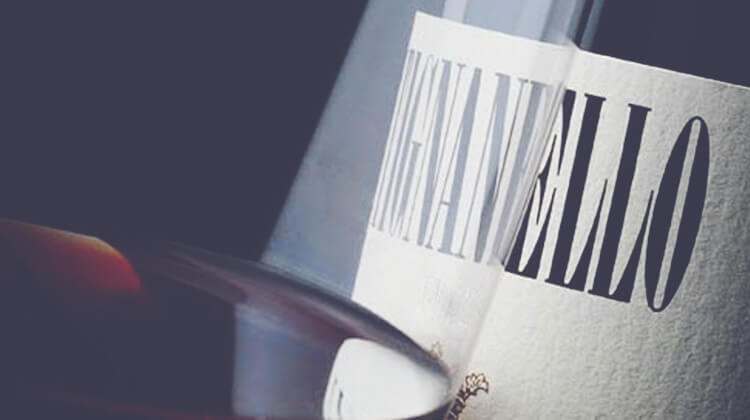Antinori’s Glory: Tignanello in focus

LiveTrade Team
5 May 2022
The term ‘game-changer’ is bandied about in the wine world, but the arrival of the inaugural 1971 vintage of Tignanello in 1974 ripped up the rulebook in Chianti Classico and reimagined what high-end Italian wine could be.
Hailing from the Tenuta Tignanello estate in the heart of Chianti Classico, the vineyard may take its name from Tinia, the Etruscan god of the sky. The brainchild of Tuscan wine royalty, Piero Antinori, from the get-go Tignanello eschewed the Chianti Classico denomination and was labelled as a lowly Vino da Tavola due to its rebel spirit and unconventional composition.
“I don't think there is another wine anywhere in the world made entirely from estate fruit that can match Tignanello for quality, consistency and value within its peer group of top-flight reds,” believes Italian-American wine critic, Antonio Galloni of Vinous.
Seeking to refine the taste of his wines – and take Tuscan wine to the next level in the process – Antinori was influenced by the wines he tasted on his travels around Bordeaux and California. Under the guidance of two wine heavyweights – Italian winemaker Giacomo Taschis and French oenologist Emile Peynaud – Antinori took a number of risks with his new creation.
Shunning Tradition
Antinori introduced a small percentage of Cabernet Sauvignon to add colour and structure to the blend, and included a dash of Cabernet Franc for freshness; a revolutionary move at the time in staunchly traditional Tuscany.
From the 1975 vintage he did away with white grapes in the blend altogether. Another first for the Chianti region was the use of new French oak barriques to age the wine. While Sassicaia was the first Super Tuscan to be bottled, in creating Tignanello, with his family’s history and prestige adding gravitas, Piero Antinori helped to cement the reputation of the fledgling category, adding younger sibling Solaia to the stable in 1978.
Since the early ‘80s Tignanello has been made from 80% Sangiovese, 15% Cabernet Sauvignon and 5% Cabernet Franc in a recipe that rarely alters, though the wine is crafted with a gentler hand than in the past, and the oak presence is less intrusive. The grapes that go into the blend are grown on 47ha of vines on gently rolling hillsides between the Greve and Pesa river valleys. Tignanello and the smaller production Solaia’s vineyards are located on the same hillside, on rocky, limestone-rich, marine marlstone soils. Boasting the highest altitude vineyards in Chianti Classico, the grapes benefit from big swings in day and night temperatures during the growing season, allowing for slow, even ripening, creating fresh, balanced wines. Around 30,000 cases of Tignanello are produced annually and the wines tend to get snapped up at lightening speed on release.
Tignanello is known for its opulence, aromatic intensity, flavours of red fruit, tobacco and spice, and smooth tannins. The Sangiovese in the blend imparts sour cherry and red plum notes, while the Cabernet Sauvignon brings black currant and cedar to the table, and the dash of Cabernet Franc lends a bell pepper savouriness to the wine.
Room for Future Growth
Tignanello regularly achieves high scores, and yet it remains priced consistently below the likes of Sassicaia and Solaia.
Both the 2015 and 2016 vintages of Tignanello received 98 points from Antonio Galloni, who describes the former as, “one of the finest Tignanellos in recent memory”, and the latter as “flat out stunning”, with “extraordinary balance and incredibly polished tannins”. The vintages command healthy prices due to their high scores, though the less lauded 2009 and 2010 vintages are also flying high price-wise, indicating that there is room for future growth across lower-scoring vintages of Tignanello.
A favourite of both British Prime Minister Boris Johnson and the Duchess of Sussex, whose former lifestyle blog ‘The Tig’ was named after the wine, Tignanello’s appeal among collectors and investors has ramped up in recent years, and the wine has grown to become one of the best-performing and most sought-after investment labels on the market. “Given the broader key dynamics across the fine wine space – the significance of ultra high net worth buyers and the global re-opening – it’s not surprising that Tignanello has been a standout beneficiary, as it has strong brand recognition and appeal for collectors, investors and the hospitality space,” says Matthew O’Connell, CEO of LiveTrade, Bordeaux Index’s fine wine trading platform.
“While the wine remains underpriced for its quality and scores, this gap has undoubtedly closed since early 2020, most markedly in 2021, with value gains of 40-50% last year,” he adds. The label has enjoyed price appreciation across all recent vintages on LiveTrade (2009-2018), going toe-to-toe with Sassicaia at the top of the Super Tuscan performance table, with prices picking up significant speed in the third quarter of 2020.
The 2012 vintage was up 56% year-on-year, and 2009 has risen by 55%. The 2013 and 2014 vintages, meanwhile, are both up 52% year-on-year. Trading activity by volume has seen a relatively sharp increase over the last 12 months, driven by an increased brand-focus in the market and also the price gains grabbing the attention of existing investors and new market participants.
Tignanello on LiveTrade
The lion’s share of Tignanello demand on LiveTrade last year came from the UK and Europe, though the brand is gaining in popularity among ultra high net worth collectors in Asia.
Despite the price gains, there is still a noteworthy discrepancy between scores and prices when compared to other Super-Tuscans. “The discount of Tignanello to other Super-Tuscans has decreased meaningfully,” says O’Connell, who puts the wine’s recent success down to its brand strength. “The fine wine market has never been so brand-driven, as exemplified by the standout performance of Tignanello and Sassicaia of late. There’s no reason to think that this won’t continue and cause this discount to compress further,” he says.
